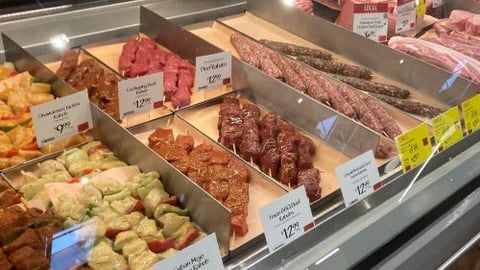Grocers Give Honest Feedback on State of the Industry
When FMI asked, grocers spoke, and they had a lot to say about the current state of food retailing.
In a new report, “The Food Retailing Industry Speaks 2002,” Arlington, Va.-based FMI — The Food Industry Association outlined several agreed-on challenges and opportunities at a time of ongoing disruption.
“On the one hand, the survey revealed that retailers remain concerned that the extreme obstacle course they have been navigating for the past few years continues, and that it’s going to become even more complex going forward at the end of 2022 and into 2023. That being said, the food industry has shown tremendous resolve in meeting our customers’ needs, and we remain committed to investing heavily in the customer experience,” said Leslie Sarasin, president and CEO of FMI, during a phone briefing that highlighted the report’s results.
Retailers who participated in the annual survey concurred that the industry is rapidly evolving to meet consumers’ needs while trying to get around hurdles like historic inflation, a stubborn pandemic, supply chain hassles and nationwide labor shortages. For the first time in the history of FMI’s “Speaks” series, suppliers were polled this year as well.
First, the challenges: an overwhelming majority of 85% of retailers and 86% of suppliers expect inflation to continue to put pressure on margins, while 87% of retailers and 86% of suppliers acknowledge that attracting and retaining talent is negatively affecting their business. Supply chain issues are also top of mind, with 70% of retailers noting that disruptions are negatively affecting their business, up 42% from 2021, and 82% of suppliers sharing that sentiment.
“The latest data indicates that we are seeing some upticks in on-shelf availability, and our product suppliers tell us that sourcing is easing, as are some of the costs. And there seems to be a downtick in inflation -- all good signs -- but I think we are a long way from really understanding what the future supply chain will look like,” said Mark Baum, FMI’s chief collaboration officer, adding that retailers and suppliers will be more inextricably linked as the industry contends with new norms.
Retailers and suppliers also weighed in on ways that the business is changing with the times. For example, the online share of total sales continued to grow, up at a rate of 6.5% in 2021, compared with 5.7% in 2020 and 2.5% in the pre-pandemic year of 2019. The report confirmed that 91% of food retailers now offer online sales, with 47% reporting that their digital sales increased last year. At the same time, 89% of retailers offer in-store or curbside pickup of online orders.
While a springboard for growth, e-commerce isn’t without its own obstacles, from the shuffling of labor for online purchase fulfillment to the toggling between in-store, curbside pickup and delivery. Although most stores are in the digital space, only 10% said that their e-commerce operation is very sophisticated, while 46% said that it’s not sophisticated and 44% said that it’s somewhat sophisticated. Moreover, credit card fees are eating away at margins, since such fees average 1% of food retail sales and up to 1.4% for retailers that operate more than 10 stores.
Beyond e-commerce, grocers shared the ways in which their stores are adapting to changing circumstances. More than 80% of retailers said that they’re giving more space to prepared grab-and-go items. To meet the needs of health-oriented shoppers, 70% of grocers are offering more better-for-you foods and 72% expect that demand for locally sourced produce will continue to expand. A majority of 64% also anticipates a rise in plant-based offerings.
“The consumer’s own health goals have been also driving business growth. A major trend emerging from the pandemic is that shoppers who are looking for fresher, healthier and more convenient options are spending more time in their grocery stores,” observed Sarasin. “As a result, retailers also sought to separate themselves from their competitors in their product differentiation strategies in this arena.”
Grocery tech is part of the shifting retail landscape, too, according to FMI’s findings. Nearly three-quarters of grocery respondents (73%) said that they’re focusing on investments in new technologies such as mobile checkout systems, online foodservice ordering and delivery programs, and dynamic pricing advances.
“The rapid adoption of technology was and is a key component of helping food retailers and their suppliers overcome many challenges,” noted Baum.
Finally, grocers shared that they expect the obstacle course to gain a few more stumbling blocks in the short-term future. Retailers and suppliers anticipate a less favorable economic climate ahead, with 78% of food retailers believing that inflation will cause their operating costs to escalate.
For 74 years, FMI’s “Speaks” report has provided the food industry with an annual pulse on the industry. The 2022 report is based on research conducted with food retail and wholesale companies representing 38,000 stores and food product suppliers with $160 million in annual sales.






